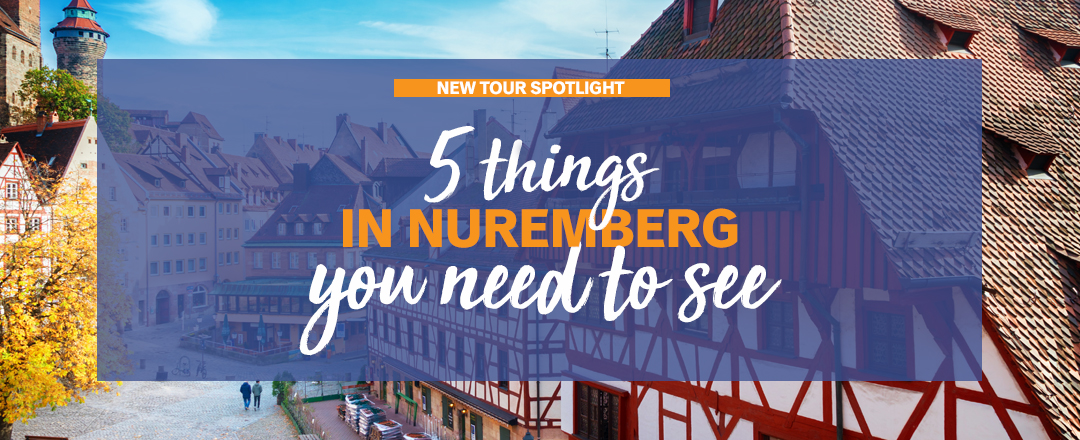Nuremberg might be known as Bavaria’s second city, but it isn’t one you should miss—especially for those interested in World War II history, medieval history, and everything in between.
That’s because the city was a medieval stronghold that became the center of Nazi Germany during World War II. And though 90% of Nuremberg’s city center was destroyed during the war, there are still plenty of opportunities to experience history there.
Here are five historical experiences you shouldn’t miss in Nuremberg:
1 – Walk the walls
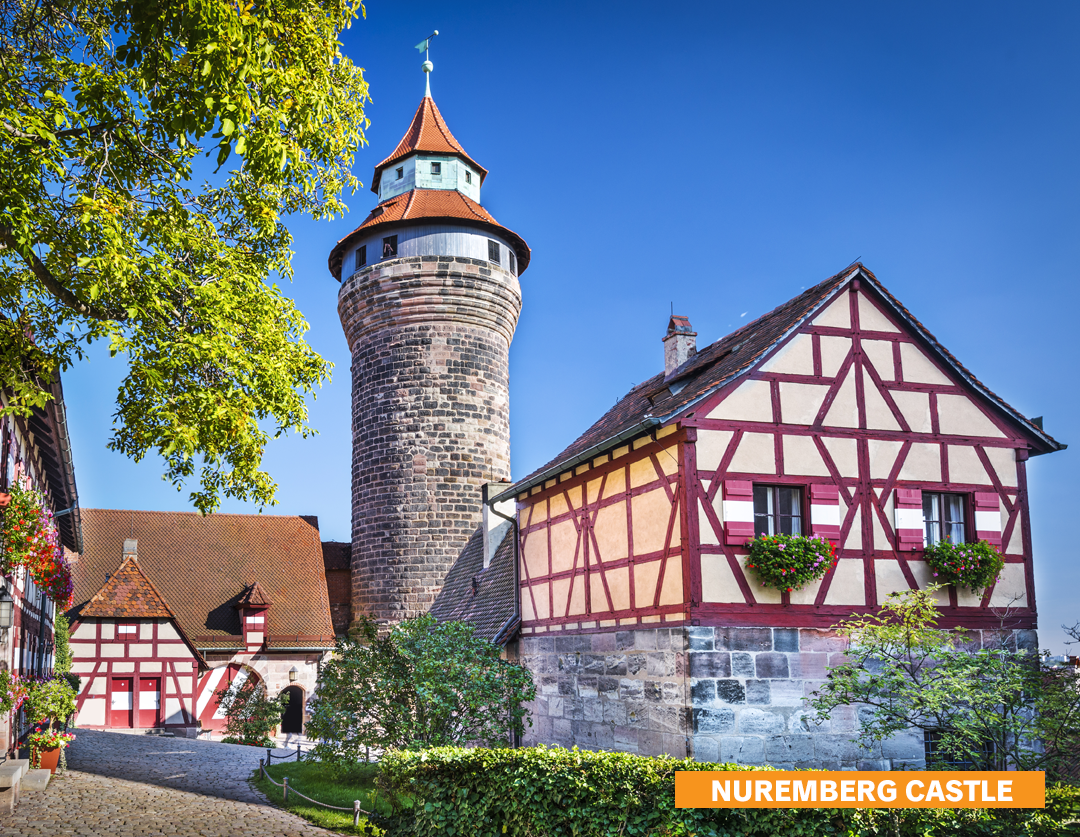
Nuremberg’s city walls—built between the 12th and the 16th centuries and stretching for about three miles—formed one of the strongest medieval defense systems, along with the castles.
The castles were built beginning in 1000 AD. They symbolize the importance of the Holy Roman Empire during medieval times, as the Empire’s held his imperial courts in the buildings. He also stayed in the castle when he was in town. The castles faded in importance in the 17th century, but became symbolic of German power during the Nazi era, when they castles were restored.
The castle sustained some damage during the bombings in 1944, but it has been rebuilt and restored. Today, you can walk through the grounds and see the imperial museum, artwork from the 17th century, the chapels, and striking views of the old city.
2 – Follow in the footprints of an artist
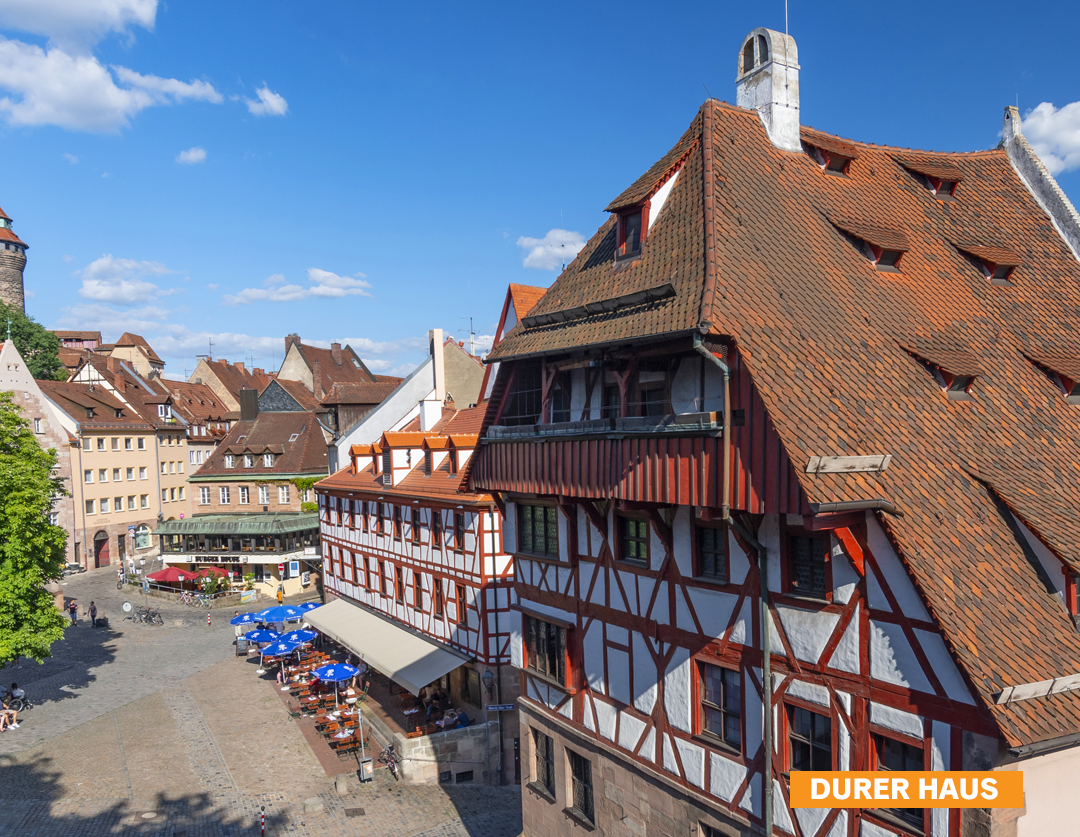
Built in 1420 with traditional timber construction, this building was the home of Albrecht Durer from 1509-1528. Durer was a woodcut printer and painter who was known for hanging out with famous Italian painters like Raphael and Leonardo da Vinci during the Renaissance. He brought their spirit of innovation and their penchant for anatomical detail north, and preferred the more lucrative printmaking. Today, he’s considered one of the greatest artists of the Northern Renaissance.
The house has functioned as a museum since 1871. It was damaged heavily in the 1944 bombing of Nuremberg, and parts of it have been rebuilt. The museum has tours led by an actress who plays Durer’s wife, takes you through everyday life of the 16th-century artist, and also shows you the process of printmaking.
3 – Explore the underground city
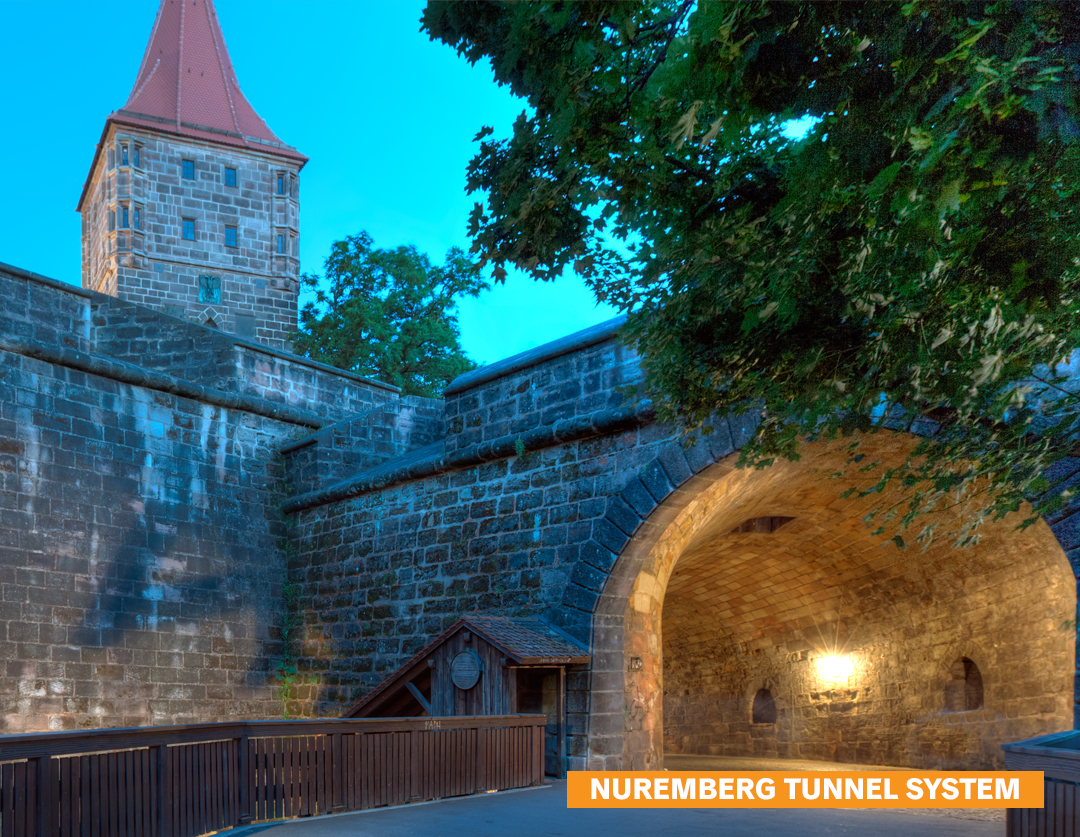
You would never know it, but Nuremberg has a man-made underground tunnel and cellar system covering over six acres.
This is how beer was stored before refrigeration—with tons of underground cellars that kept it cool. During World War II, some of Germany’s greatest works of art survived in these bunkers 25 meters below the ground. This wasn’t an approved use of war funds, but it was deemed necessary at the time.
The bunkers were also used for protection from bombs during the war. Today, tours are led through the tunnels, including ones that show where beer was and is kept, and where artwork was protected.
4 – See the largest surviving Nazi structure
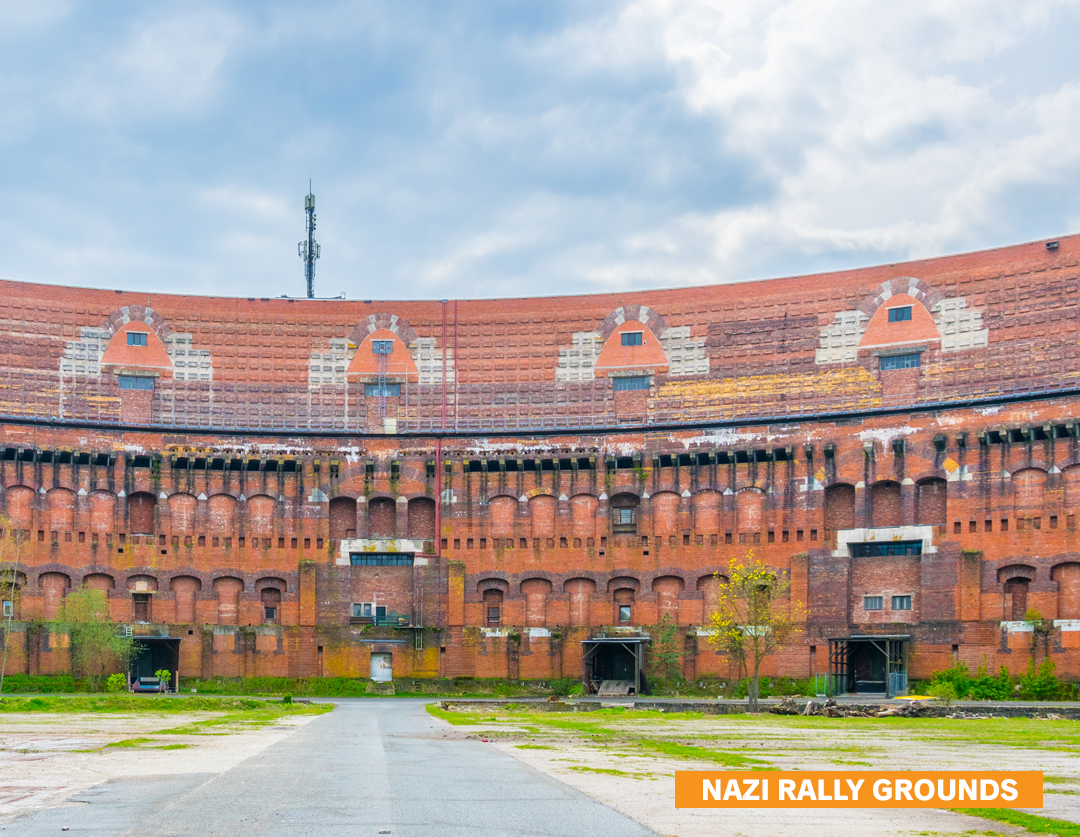
If you haven’t seen Triumph of the Will, the eerie propaganda film set in Nuremberg in 1934, you should definitely give it a look before heading to Nuremberg. The film depicts a Nazi party rally with a crowd of over 700,000, and includes images of soldiers marching and making formations, and speeches from prominent Nazi leaders, including Adolf Hitler.
The film is set in the Nazi Rally Grounds, much of which is either unfinished or has been repurposed. Six rallies were held in these four square miles between 1933 and 1938.
The most important building to see in the grounds is the unfinished New Congress Hall, which was built in 1935 by Hitler’s architect Albert Speer to look like the Colosseum and acts as the entrance to the rally grounds. The Congress Hall is the largest surviving Nazi structure. Be sure to stop by the Documentation Center, which includes a permanent exhibition about Nazi Germany called “Fascination and Terror.”
You’ll also see the Zeppelinfeld, a grandstand that famously had the swastika blown off of it on film when the war ended in 1945. If you look closely, you might also see the remains of the foundation of a stadium that was meant to hold 400,000 spectators. To put this in perspectives, Madison Square Garden holds nearly 20,000 spectators, and Michigan Stadium—the largest in the U.S.—holds just over 100,000.
5 – See justice come to life
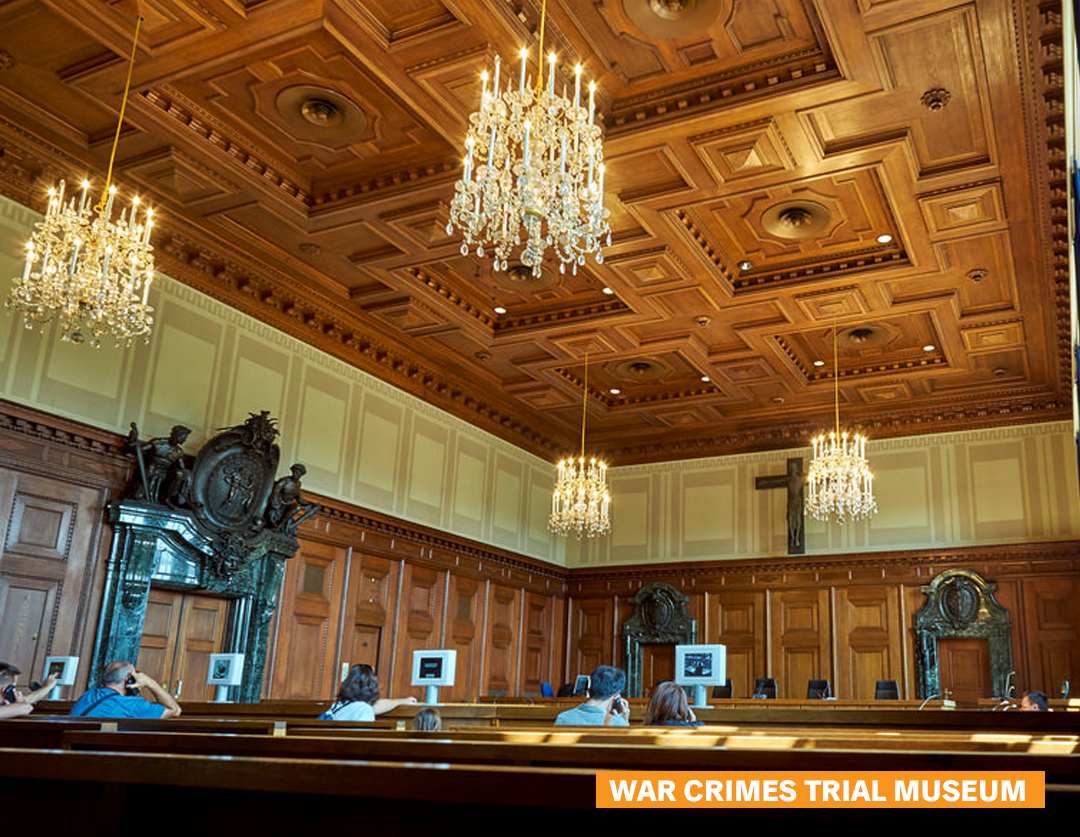
Between November 20, 1945 and October 1, 1946, 24 leaders of the Nazi party were tried for crimes against humanity over their involvement in the atrocities of World War II. In the end, 10 were sentenced to hang on October 16, 1946.
The Nuremberg Trials were significant for being held in the site of the birth of Nazism. The term “genocide” was used in court for the first time at these trials, and some of the party’s highest-ranking leaders were brought to justice.
Hermann Goring, the highest-ranking official to be tried, was sentenced to death, but committed suicide the night before his scheduled execution. Among the other defendants included a radio commentator, Hitler’s Minister of the Interior, Minister of Economics, racial theorist, and architect, plus the publisher of an anti-Semitic newspaper.
At the War Crimes Trial Museum, you can see the courtroom where these trials were held, in number 600—a courtroom that’s still in use—at the top floor of Nuremberg’s Palace of Justice.
To learn more about the incredible history of Nuremberg, take a look at our brand new Germany: World War II History itinerary.

